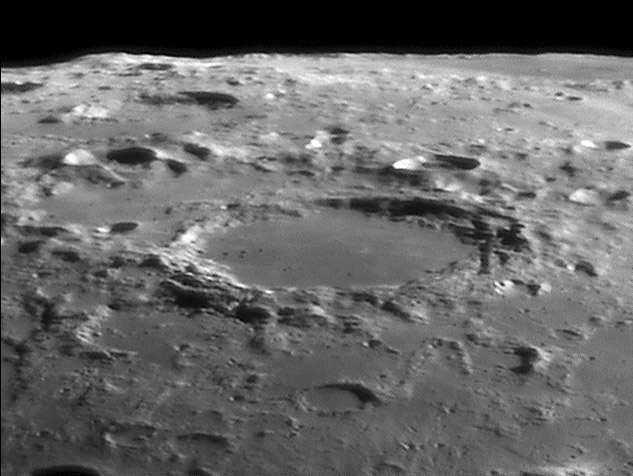
image by Oliver Pettenpaul
Oliver Pettenpaul comments that in his great image, Endymion looks like Plato, with a smooth floor pock-marked by a few small pits. But this view of 125 km wide Endymion has an obliquity of view that gives a three-dimensionality we never see at Plato. Endymion is probably older than Plato for its walls have mostly lost its terraces. A similar, but larger and undesignated crater sticks out from under Endymion to the left; both craters and many other low spots in this area are filled with smooth, relatively crater-free mare material that is dark near full Moon. And the region of maria is more extensive than is apparent for small dark halo craters (not visible here) show that some of the smooth, but light-hued plains are mare material draped by lighter ejecta. One final thing - do you see the concentric crater? To find it look at Atlas D, the small flat-floored crater in the front-center of the image. Between D and Endymion is an even smaller crater - not the one with a conical dark shadow - with a just detectable central ring. Look at the Clementine image to see this wierd concentric crater with ball-bearing like mounds between the two rims.
Chuck Wood
Technical Details:
May 2, 2006. Celestron C9.25″ + TeleVue 3x Barlow + Astronomik Type II red filter + Foculus FO124B cam. 200 of 2000 frames stacked with 7 alignment points.
Related Links:
Rükl plate 7
Oliver’s website
Yesterday's LPOD: Bigger Than Little, but not Quite Big
Tomorrow's LPOD: A New Lunar Journal!
COMMENTS?
Register, Log in, and join in the comments.



